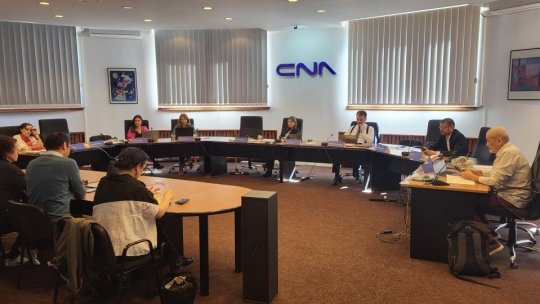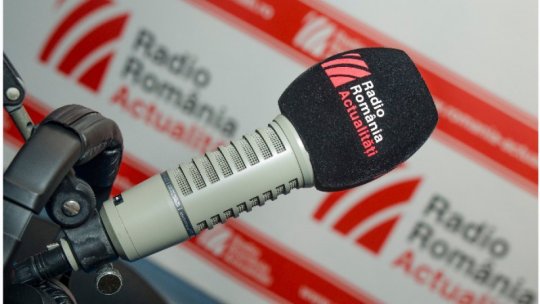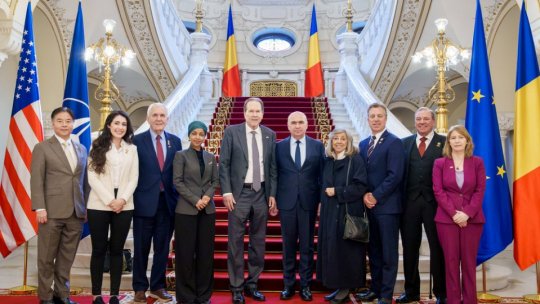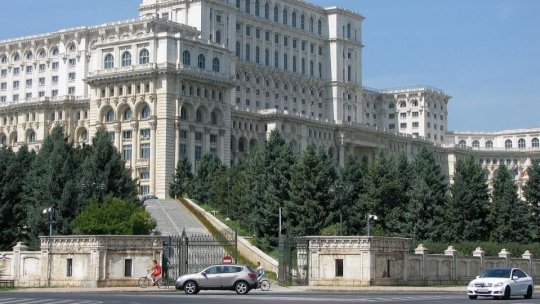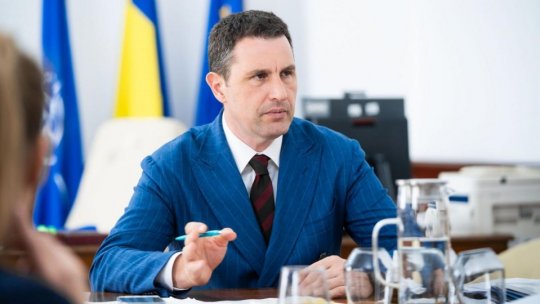10 years since Romania’s territorial expansion
On February 3, 2009, Romania’s territory expanded with 9700 km² of sea waters - continental shelf and exclusive economic zone in the Black Sea.

Articol de Carmen Gavrilă, 11 Februarie 2019, 23:22
On February 3, 2009, Romania’s territory expanded with 9700 km² of sea waters - continental shelf and exclusive economic zone in the Black Sea, the only expansion of territory and sovereign rights since Romania’s Great Union in 1918.
"International Court of Justice (ICJ, The Hague) has unanimously decided that the line of the single maritime boundary delimiting the continental shelf and the exclusive economic zones of Romania and Ukraine in the Black Sea will follow the 12-nautical-mile arc of the territorial sea of Ukraine around Serpent’s Island to the point where the arc intersects with the line equidistant from Romania’s and Ukraine’s adjacent coasts"- This was the announcement of the International Court of Justice in The Hague in 2009, where the Court announced that Romania expanded, by international law, with 9700 km², a rich area of hydrocarbons that increase the country's energy independence. This also solved a complicated political dispute that lasted for over 40 years, which almost blocked relations between Romania and Ukraine.
Romania's team of lawyers led by Bogdan Aurescu has gained more than has ever been achieved in all similar delimitation processes before The Hague International Court. For Romania, it was also a confirmation of one of the principles of its foreign policy, namely reliance on instruments of international law.
What does ICJ Decision mean for Romania?
First, it means 9700 km² of continental shelf and exclusive economic zone of Romania and access to the resources of these maritime zones. If this Court Decision had not existed, these resources could not have been accessed.
Decision also meant final settlement of a complicated political dispute that lasted for more than 40 years (dispute over maritime demarcation in the Black Sea basin started in 1967 with former USSR and took 20 years of negotiations with former USSR, six years and 34 rounds of negotiations with Ukraine and four years, four months and 18 days of legal confrontation with the ICJ). It is a definitive solution that can no longer be changed or questioned (not even if circumstances change, like for example illegal occupation of Crimea leads to part of Ukraine's maritime spaces to be de facto controlled by Russia).
Final decision in the process has eliminated this complex issue on the political agenda of the two neighboring states, so it favored leveling of asperities in the Romanian-Ukrainian relationship. If this case would not have been solved in 2009, it would not have been possible to relaunch relations with Ukraine between 2014 and 2015, in the context of Crimea and East Ukraine conflict and considering the firm support by Romania of Ukraine’s sovereignty, territorial integrity and European aspirations. In this framework, the way a solution was found by submitting an appeal to the International Court of Justice (…) can also be viewed as an example of peaceful settlement of disputes in the Black Sea region, which does not lack conflicts between the states of the region (..).
In addition, the unquestionable solution to this dispute was unanimously adopted for the first time in ICJ history without separate opinions or divergent statements of judges, which indicates the solidity of the solution (even the ad-hoc judge appointed by Ukraine voted in favor of the solution that gave Romania 80% of the disputed area).
Delimitation specialists unanimously agree that this result represents the most from what could be achieved by Romania in the process and, at the same time, the most of what has been achieved in all similar delimitation processes submitted to ICJ. There is no other case of a more favorable outcome.
ICJ Ruling was much better than it could have been achieved through bilateral negotiations: the "best" compromise offer of the other side was made in 1987 by the USSR and would have led, if it was accepted, to allocation to Romania (…) of a continental shelf area and an exclusive economic zone of approximately 4000 km² (…) while by ICJ Ruling of 3 February 2009, Romania obtained 9700 km², which is two and a half times more than the former Soviet Union proposed.
Result was obtained through the use of instruments of international law, which confirms that for a state the size of Romania, international law exponentially multiplies efficiency of the foreign policy action in order to achieve the objectives of national interest. That is why respect for international law must be permanent in the core of Romania's foreign policy and its arsenal of diplomatic action.
Romanian team headed by Bogdan Aurescu had 20 members, including the Agent, who coordinated all of the team’s work, from organizational aspects to establishing grounds - drawing up documents (…) transmitting evidence, preparing pleadings, etc (…)
The 1713 written documents and over 400 pages for the pleadings were drafted mostly by the Romanian team. This also explains the low cost of the proceedings - 630,000 euros, considering that other states pay many millions of euros for a trial at the ICJ. (…)
ICJ Ruling was an important diplomatic success, especially in applying international law, and a result that raised the profile of Romania and that of the Romanian School of International Law. Moreover, Judgment of 3 February 2009 has become an important landmark for subsequent maritime delimitation, being consistently cited in the case law of the ICJ and other international bodies, as well as in the international doctrine of the matter.
Team that has been managing the ICJ trial for four years, four months and 18 days and the people who have been part of it is the most important added value of this formidable experience that was The Hague process. There are great people who have done their duty, through professional work and honest effort (…), with an admirable moral profile.
The Hague process looked exclusively at delimitation of the continental shelf and exclusive economic zones of the two states in the Black Sea, and not the Serpent Island's membership in one of them. This is because, in international justice, courts can only rule on settlement of what the parties to the dispute have agreed to settle before going to court. In the exchange of letters at ministerial level concluded in 1997 in line with the basic political Treaty, which established the possibility of resolving the Romanian-Ukrainian dispute at the ICJ, the issue of Serpent Island affiliation was not agreed to be submitted to The Hague Court. Exchange of letters only referred to notifying the ICJ to solve the problem of delimiting the continental shelf and exclusive economic zones. Moreover, another article of that agreement by an exchange of letters mentions Ukraine's obligation not to place offensive weapons on the Serpent Island, "belonging to Ukraine", so an explicit recognition of the membership of this maritime formation to the neighboring state. What has been debated, though, and Romania has gained ground, was the role of the Isle in delimitation, the Court assuming Romania's arguments that the Island has no influence in establishing the boundary line.
At the hearings in September 2008, Romanian team included Agent Bogdan Aurescu, Cosmin Dinescu (co-agent, at that time general manager for legal affairs), Calin Fabian (co-agent, Romanian Ambassador to The Hague) Liviu Dumitru, Ioana Preda, Irina Niţă, Mirela Pascaru, Catrinel Brumar, Olivia Horvath, Rodica Vasile (from MAE), Eugen Laurian, Octavian Buzatu, Ovidiu Neghiu (cartographers), Mihai German, Gicu Boroşi (ANRM), Alain Pellet, James Crawford , Vaughan Lowe (counselors, helped by their assistants Daniel Muller and Simon Olleson). Other members of the team, who helped in the document writing phase of the process: Iulian Buga (co-agent, Romanian Ambassador to The Hague until 2008), Ion Galea, Alina Orosan, Victor Hrihorciuc (Russian and Ukrainian translator). Their effort is combined with the effort, involvement and dedication of many other employees in the Romanian Ministries of Foreign Affairs, Defense and Home Affairs, involved in the pre-trial negotiations.
In the document writing phase, the Romanian Memorandum, filed with the IJC in August 2005, included 256 pages of argumentation, in which numerous drawings, maps, graphs were attached, accompanied by two substantial volumes of annexes - one containing the original texts, the other containing certified translations in English of the 91 annexes, both volumes adding up to 857 pages. To this was added an atlas with 42 maps. Romania's reply, filed with the ICJ in December 2006, had 331 pages and two volumes with 45 annexes, a total of another 326 pages. In the pleading phase, Judges' Files were prepared by the Romanian Team in 36 copies for each day of the hearings, in support for documents, maps, etc. The 400 pages of pleadings covered 200 documents or factsheets: 147 documents in the first round of pleadings and 53 in the second round. 92 charts, plus extracts of documents and map copies (…) were also prepared to sustain the pleadings.
Source:RRA.Translated by Miruna Matei

